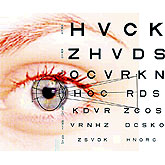Excerpts from AME Guide |
 |
I had eye surgery, what should I do? The FAA approves radial keratotomy, photorefractive keratectomy, LASIK, (laser in situ keratomileusis) and photorefractive keratoplasty (Excimer Laser) for all classes of certification. Following satisfactory recovery from any refractive procedure, the FAA requests that a brief status report from your ophthalmologist be submitted to the Aeromedical Certification Division indicating complete healing without adverse side effects.
At the time of your next scheduled FAA medical examination, a report of Eye Evaluation (FAA Form 8500-7[pdf] ) should be completed by your eye specialist and presented to the Aviation Medical Examiner. This report must verify complete healing, stabilization of visual acuity, and lack of significant residual effects that often accompany these types of surgical procedures, including night glare, vision haziness, or eye pain. Complete healing following RK surgery is usually accomplished in four to six weeks, but up to twelve months may be necessary in some cases.
When your ophthalmologist releases you to resume normal activities, and your visual acuity meets the standard for the class of medical you hold, you may resume exercising privileges on the current medical certificate, in accordance with CFR 61.53. At the time of your next scheduled medical application, your aviation medical examiner may issue the certificate if you are found to be otherwise qualified. Find an AME.
Aerospace Medical Dispositions
Item 31. Eyes - Procedure(s)
| Disease/Condition | Class | Evaluation Data | Disposition |
|---|---|---|---|
| Aphakia/Lens Implants | All | Submit all pertinent medical information and current status report (See additional disease dependent requirements) | If visual acuity meets standards - Issue Otherwise - Requires FAA Decision |
| Conductive Keratoplasty - Farsightedness | All | See Conductive Keratoplasty Protocol | See Conductive Keratoplasty Protocol |
| Intraocular Devices | All | See Protocol for Binocular Multifocal and Accommodating Devices | See Protocol for Binocular Multifocal and Accommodating Devices |
| Refractive Procedures other than CK | All | Provide completed FAA Form 8500-7, type and date of procedure, statement as to any adverse effects or complications (halo, glare, haze, rings, etc.) | If visual acuity meets standards, is stable, and no complications exist - Issue Otherwise - Requires FAA Decision |
Note: Numbers correspond to the required entry in the AME portion of the FAA Form 8500-8
Note: Numbers correspond to the required entry in the AME portion of the FAA Form 8500-8
